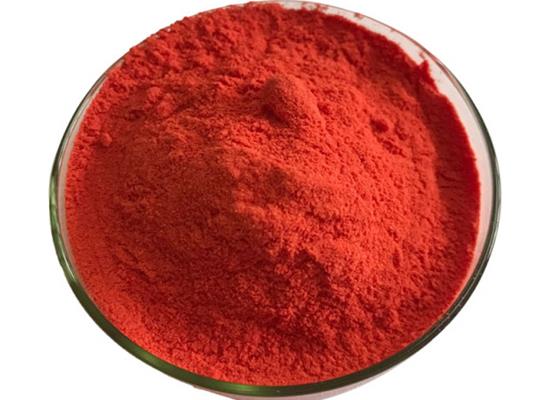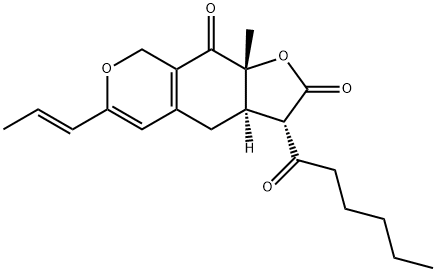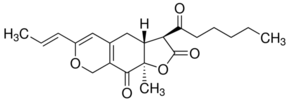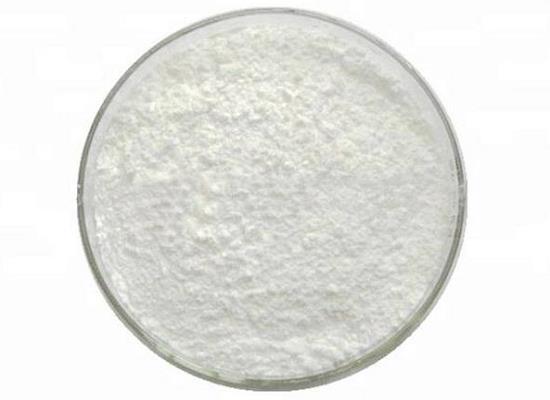Monascin: activities and applications
General Description
Monascin, derived from Monascus-fermented products, exhibits potent anti-inflammatory and anti-diabetic properties. It effectively suppresses inflammatory factors, reduces endothelial adhesiveness, and enhances antioxidant genes, making it promising for addressing inflammation-related conditions, diabetes, and cardiovascular diseases. Additionally, as a PPARgamma agonist, monascin demonstrates anti-diabetic effects and anti-hepatic fibrosis activity. Its diverse applications span the food, pharmaceutical, skincare, and cosmetic industries, offering antioxidant, antimicrobial, and colorant properties, with potential for drug development and functional foods targeting cardiovascular health. Ongoing research continues to unveil the expanding potential of monascin across multiple sectors.

Figure 1. Monascin
Activities
Anti-inflammatory activity
Monascin, a compound derived from Monascus-fermented products, demonstrates potent anti-inflammatory activity, particularly in the context of hyperglycemia and insulin resistance. Research has revealed that high levels of methylglyoxal (MG) in diabetic patients contribute to inflammation, which can lead to various complications. Monascin has been shown to effectively suppress the production of inflammatory factors, such as tumor necrosis factor-alpha and interleukin-6, in monocytes induced by MG. This suppression is dependent on the regulation of PPARgamma, a key nuclear receptor involved in the control of inflammation. Furthermore, monascin's anti-inflammatory capacity extends to the inhibition of JNK, extracellular signal-regulated kinase (ERK), and p38 kinases, all of which play crucial roles in inflammatory pathways. In addition to its anti-inflammatory effects, monascin has demonstrated the ability to reduce TNF-a-stimulated endothelial adhesiveness and intracellular ROS formation in human aortic endothelial cells, indicating potential implications for clinical atherosclerosis disease. Moreover, studies have shown that monascin enhances stress response/antioxidant genes, thereby improving oxidative stress resistance and attenuating oxidative damage. It achieves this through the regulation of the FOXO/DAF-16-dependent insulin signaling pathway. Additionally, monascin activates Nrf2, a transcription factor that plays a key role in protecting against oxidative damage, and alleviates insulin resistance. In conclusion, the research findings strongly indicate that monascin exhibits remarkable anti-inflammatory and antioxidative properties, making it a promising candidate for addressing conditions associated with inflammation, oxidative stress, and related complications, particularly in the context of diabetes and cardiovascular diseases. 1
Anti-diabetic activity
Recently, studies have revealed that monascin acts as a PPARgamma agonist and exhibits anti-diabetic properties. In both in vitro and in vivo experiments, monascin led to significant PPARgamma phosphorylation and subsequent reduction in PDX-1, GCK, and insulin expression. Furthermore, monascin, along with rosiglitazone, demonstrated protection against impaired insulin expression and effectively prevented hyperglycemia in fructose-rich diet-induced mice. Additionally, it downregulated blood glucose levels during the oral glucose tolerance test. In investigations on hepatic stellate cells (HSCs), monascin showed inhibitory effects on receptor for AGEs (RAGE) signaling and subsequent anti-hepatic fibrosis activity. By upregulating PPARgamma, monascin attenuated alpha-smooth muscle actin (alpha-SMA) and reactive oxygen species (ROS) generation in HSCs, independent of RAGE activation. These findings suggest that monascin has the potential to regulate PPARgamma, delay or inhibit liver fibrosis progression, and serve as a significant anti-fibrotic agent in preventing liver disease. 2
Applications
Monascin, a natural pigment derived from Monascus-fermented rice, has a wide range of applications due to its diverse properties. Firstly, monascin has demonstrated powerful antioxidant capabilities, making it a valuable ingredient in the food and beverage industry for extending shelf life and maintaining product quality. Additionally, its antimicrobial properties enable its use as a natural preservative, reducing the need for artificial additives. Furthermore, monascin has shown potential as a natural colorant, providing an alternative to synthetic dyes in various food products. Its ability to inhibit cholesterol synthesis also positions it as a promising candidate for functional foods targeting cardiovascular health. In the pharmaceutical sector, research suggests that monascin may possess anti-inflammatory and anti-cancer properties, opening doors for future drug development. Outside of the food and pharmaceutical industries, monascin's antioxidant and antimicrobial properties have led to its exploration in skincare and cosmetic products. With ongoing research into its bioactive effects, the potential applications of monascin continue to expand, offering a natural and versatile solution across multiple sectors. 3
Reference
1. Hsu WH, Pan TM. A novel PPARgamma agonist monascin's potential application in diabetes prevention. Food Funct. 2014;5(7):1334-1340.
2. Hsu WH, Lee BH, Chang YY, Hsu YW, Pan TM. A novel natural Nrf2 activator with PPARγ-agonist (monascin) attenuates the toxicity of methylglyoxal and hyperglycemia. Toxicol Appl Pharmacol. 2013;272(3):842-851.
3. Afroz Toma M, Rahman MH, Rahman MS, Arif M, Nazir KHMNH, Dufossé L. Fungal Pigments: Carotenoids, Riboflavin, and Polyketides with Diverse Applications. J Fungi (Basel). 2023;9(4):454.



